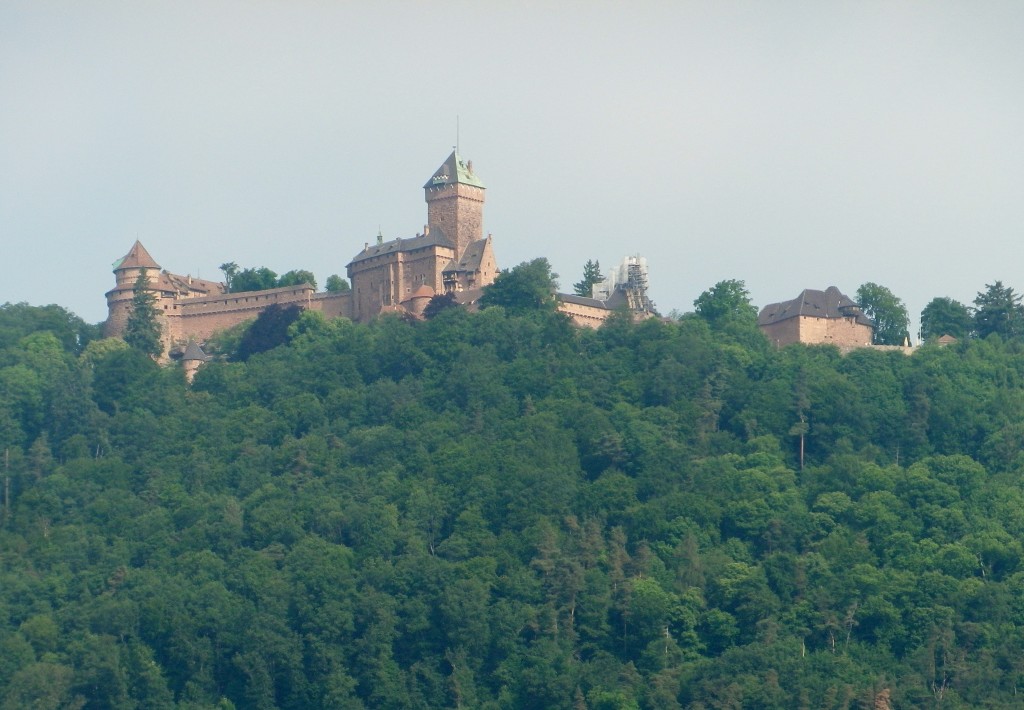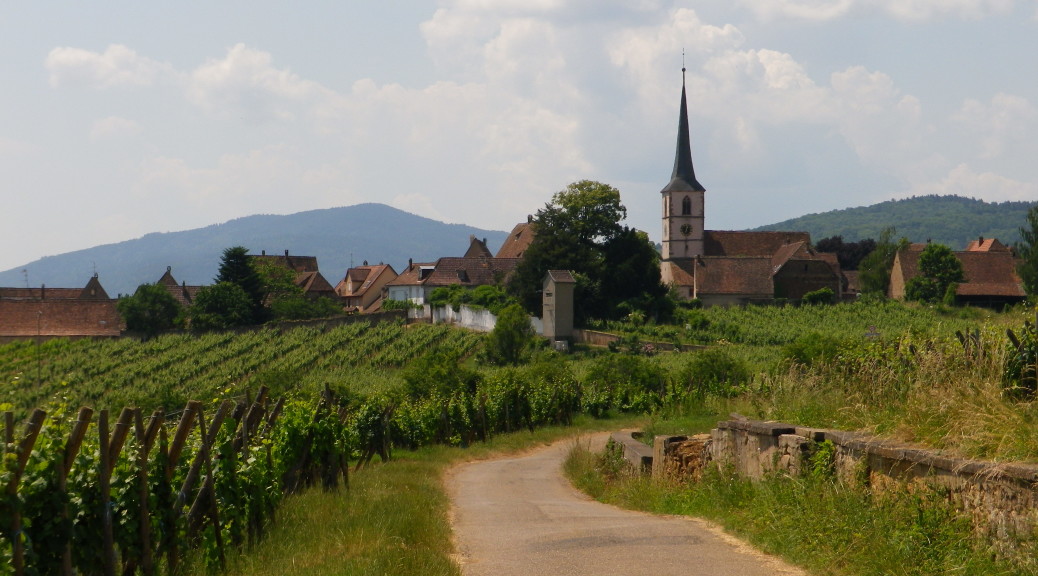At a wine tasting with both red and white wines, organizers usually end the event with the red wine selection. In my most recent bike tour, I began in white wine territory, (albeit one that produces a decent Pinot Noir as well), and finished the trail in an Alsatian village known for its reds. In between, the trail wound through other compact villages with colorful visuals, people and history, and vineyards, lots of vineyards.
So it was with this trail: wonderful, diverse wines, interesting villages, and a bit of history, all in one beautiful day. From the outset in Marlenheim, the trail revealed its rural tendencies. The first ten kilometers or so were along a beautifully maintained bicycle-only trail, set amidst green fields, woods, and past the backs of villages. After Molsheim (home to the first Grand Cru along the trail) and Dorlisheim, another four and a half kilometers of peaceful trail resumes. Be it through fields or vineyards, there were plenty of sights and views to admire. Alsatian countryside is idyllic, the villages beyond charming, and the trail highlighted the opportunities to appreciate these.
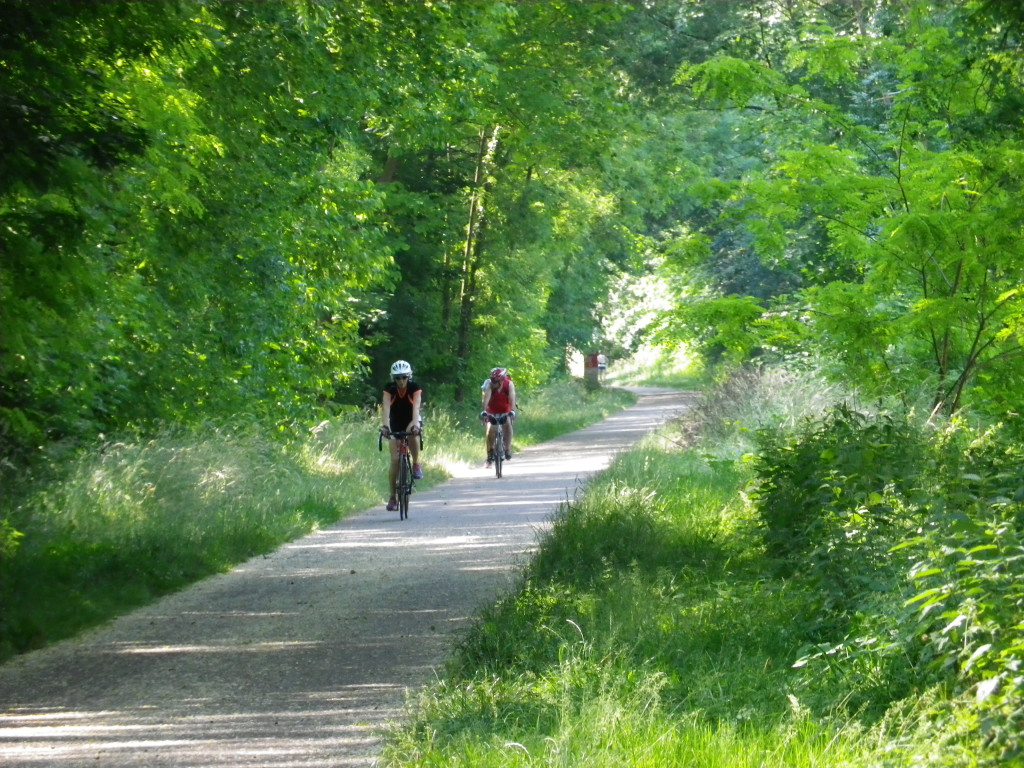
But Alsatian towns and villages are also picturesque, and extremely photogenic. The small village of Rosheim, with its beautiful Romanesque church, quaint watchtowers, and collection of half-timbered houses clustered within the village’s old walled center, suddenly came into view. It was a delightful surprise. Its bigger sister, Obernai, just three kilometers away, offered much the same colorful photo opportunities, albeit with more visitors. Being somewhat larger, Obernai offers a wide variety of eateries, wineries, and very friendly townspeople. (Check out the “Happy Obernai” production on YouTube. Guaranteed to bring on a smile.)
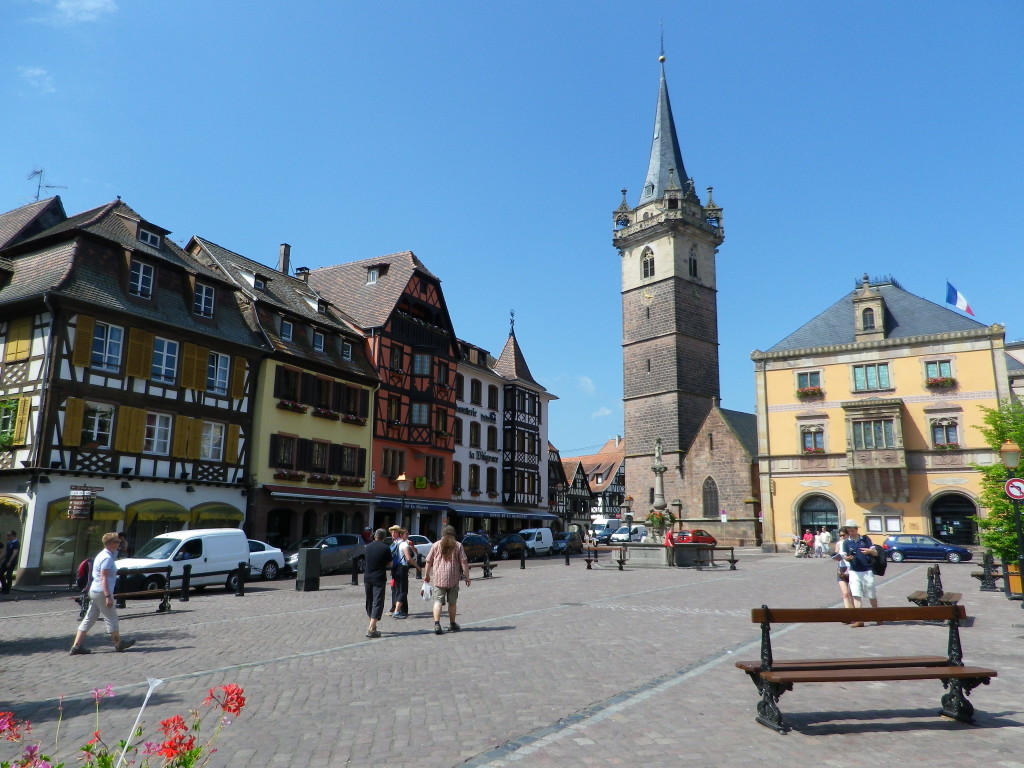
Heading south toward Barr, views to the west were of Ottrott and its famed red vineyards. First planted by monks from Burgundy who brought plantings with them, Pinot Noir has done well here over the centuries. From approximately 30 hectares of today’s planted area comes the best known of all Alsatian Pinot Noir wines: the Rouge d’Ottrott (Ottrott Red).
Nearby Barr is another jewel in this string of highly photogenic small towns. It is also truly devoted to good food and wine. Local gourmet enthusiasts sponsor an elaborate gastronomic hike in September every year. (Click here for details.) It has a highly-regarded Grand Cru: the Kirchberg de Barr, which lies just beyond the town hall. Very good Rieslings, Pinot Gris, Gewurztraminer and Muscat wines come from these vineyards on the hill. The hill also serves as the vantage point of, or the backdrop for, many a scenic photo of the town.
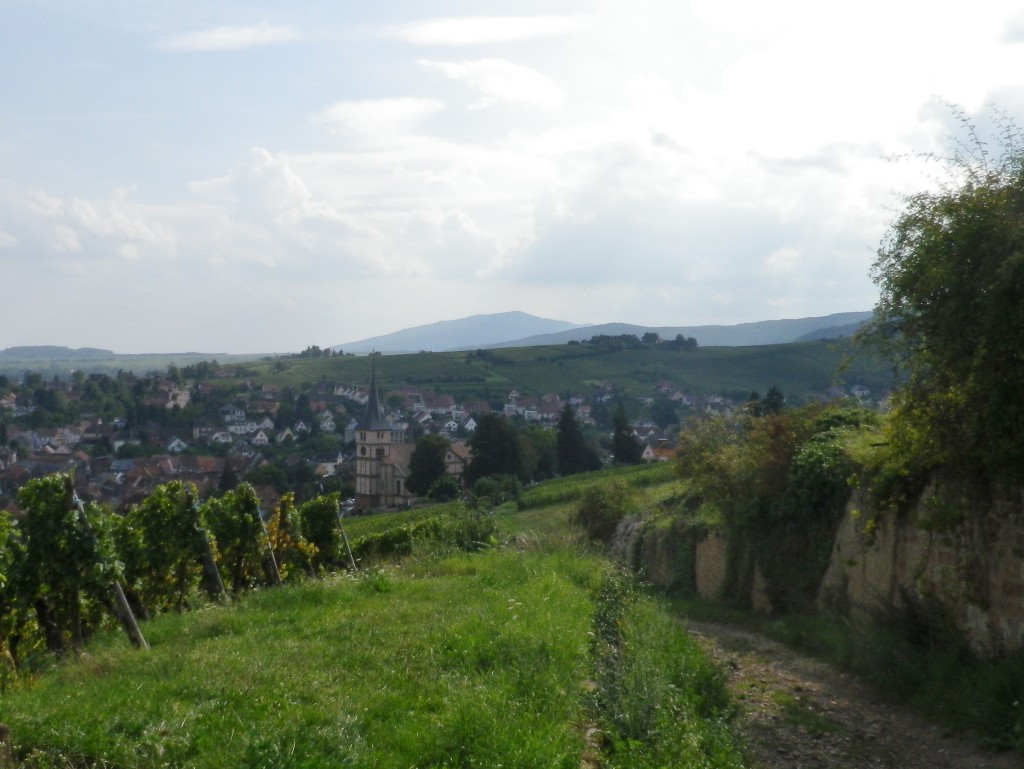
After pedaling through one of France’s most beautiful villages, Mittelbergheim, to the tune of noon-time bells, the trail continued up, then down into a draw. Here lies the ancient monastic village of Andlau. Tucked into a corner, surrounded on three sides by high green hills, this town is more remote and appears unchanged by modern times. The high hills seem more like mountains when it comes time to leave Andlau, but this is the only challenging hill on the trail.
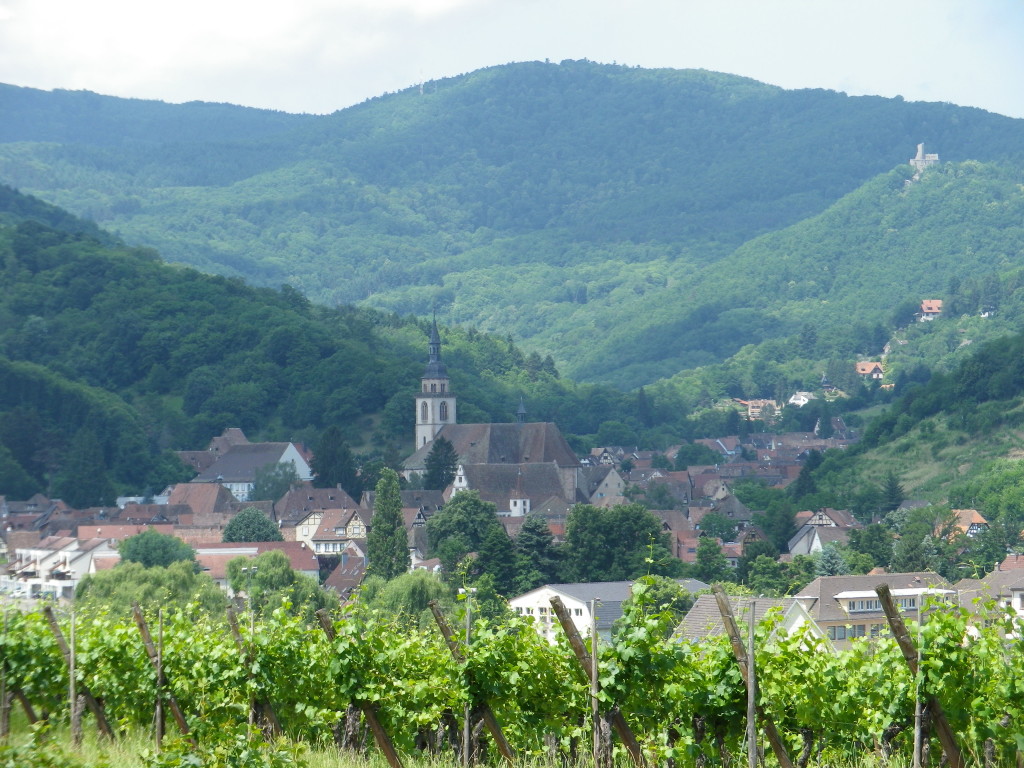
The reward comes within a couple of kilometers as cyclists pass through the next village. Itterswiller sets on a ridge, and the main road through the quaint village offers a panoramic view of what lies ahead on the trail: acres of the Grands Crus of Nothalten and Blienschwiller.
South of Dambach-la-Ville, yet another incredibly photogenic walled village, the trail comes to an intersection of valleys. Impressive as it was in its own right, the Vosges Mountains looming dramatically in the west, a revelation of sorts occurs. Somewhere just before crossing the Giessen River, near the old Roman mile marker indicating a road passed through here long ago, and a view of three castles, you realize that this bike trail traverses much the same trace of the road that offered trade opportunities to locals for over two thousand years. Wine was one of the keys to their prosperity. The vineyards were named and intimately known. They became renowned in some cases. They became sources of hope and pride for the generations of vintners who worked them. It is still like that today.
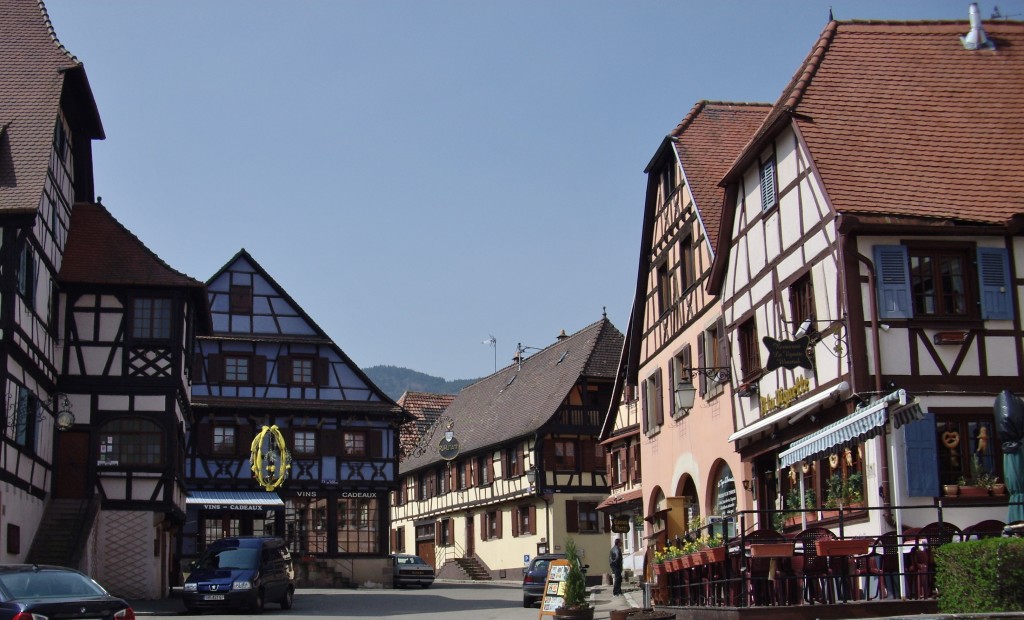
Outside the village of Kintzheim, the impressive Haut Koenigbourg castle finally came into view, a sign of the end of my ride. I crossed the southern border of the Bas Rhin Department at Orschwiller, the last village of the department on the route. I made my way to the sound of church bells into Saint Hippolyte, the second of only three villages in all Alsace known for its red wine. There, that day, I would end with a Saint Hippolyte red, and great memories of the colors, sounds, scents and tastes of the northern half of the Alsatian Wine Route Bicycle Trail.
